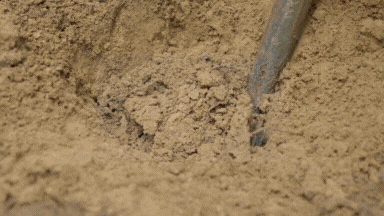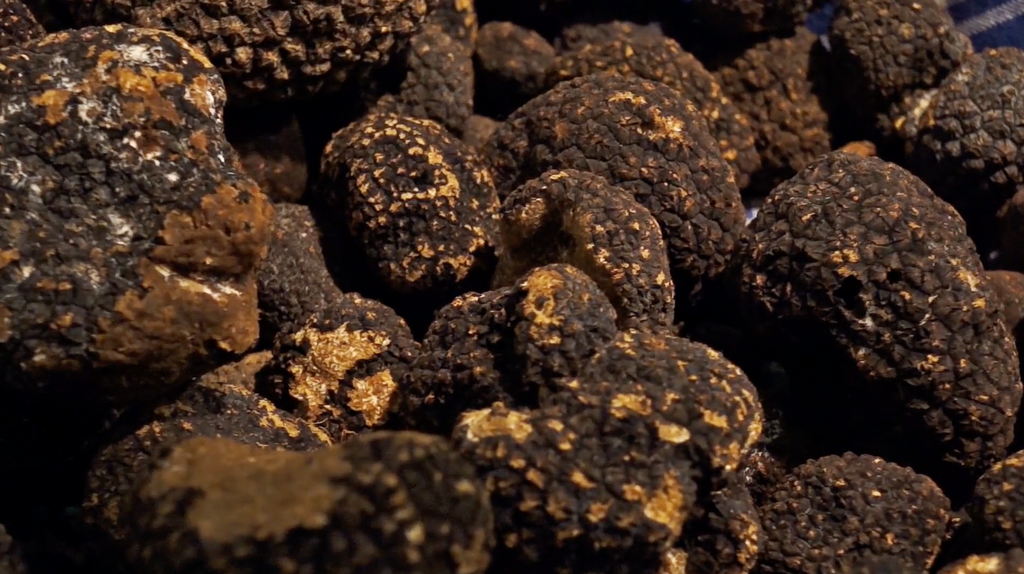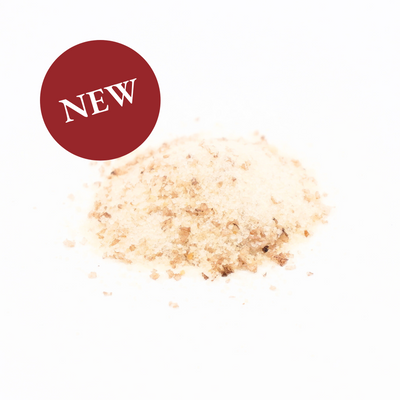Truffles 101
Stepping into any Evoolution location, you quickly become aware of our love for all things truffle. One bite of our Black Truffle Popcorn and you can see why! We would say truffles are having a moment, but truffles have been revered around the world for quite some time now.

What are Truffles?
Not to be confused with chocolate truffles, the truffles we speak of are actually mushrooms. In the fungus family, Tuberaceae, truffles are an underground version of the mushrooms you normally see growing aboveground. Like all fungi, truffles cannot photosynthesize like plants can, so they rely on mutualistic relationships with trees. The filamentous network that fungi grow for absorbing water and nutrients from the ground is co-opted by nearby tree roots to siphon some of those resources. In turn, some of the sugars produce by the trees via photosynthesis are taken by the fungus to grow. This is called mutualism, as both species benefit from the interaction.
Truffles look like something in between a small potato and a pinecone. The cocoa-dusted chocolate truffles you may be familiar with are actually made to look like a truffle freshly plucked from the earth. The gourmet truffles, white and winter black truffles in the genus, Tuber, are typically found underground in the forests of France and Italy. These are the most sought-after fungi in the world and their price tag reflects their rarity. Their distinct odour - actually a gas they give off - can be detected by mammals such as dogs and pigs, which is why these animals are employed by truffle hunters to locate the fungus. The reason this gas is given off by the truffle is because its reproductive spores cannot be spread in the air the way above-ground mushrooms can spread theirs. Instead, they send gaseous signals out to animals, which are the primary vector for spore transmission to other parts of the forest. Yum!

Black or White Truffles?
Black truffles are more common than white truffles, and are often called Périgord truffles as a nod to their origin in Périgord, France. The rich, earthy smell and taste of black truffles is often described as umami, or savoury, and sometimes nutty. Essentially like a more sophisticated and decadent mushroom flavour. Black truffles are often seen shaved on to dishes, in pastas and sauces, or in sea salt.
White truffles, also called Alba or Piedmont truffles due to their Piedmont, Italy, origin, are much more rare than black truffles. They cannot be farmed as they are more fragile, so harvesting them in the wild is the only option. White truffles are lighter in aroma and taste, but their complexity is still easy to spot. It comes through as creamy notes similar to garlic, with slight touches of oak and pepper. The delicate nature of white truffles mean they are less often seen in heavy applications such as pastas or meat. Rather they shine as the final touch on potatoes, risottos, soups, and cheeses.
Truffles at Evoolution
If you are new to the truffle scene, we recommend sampling the White Truffle Oil and Black Truffle Oil one after the other to explore the differences in the two. As soon as you smell the two, their differences are evident. We also highly encourage trying out our Black Truffle Popcorn to taste how the Black Truffle Sea Salt complements our creamy Butter Infused Olive Oil on your favourite movie night snack.
And one final note: less is more! You really only need a touch of truffle to achieve its savoury flavour. Too much and your dish can easily be overwhelmed by the intense notes. So start light; you can always add more!












Leave a comment